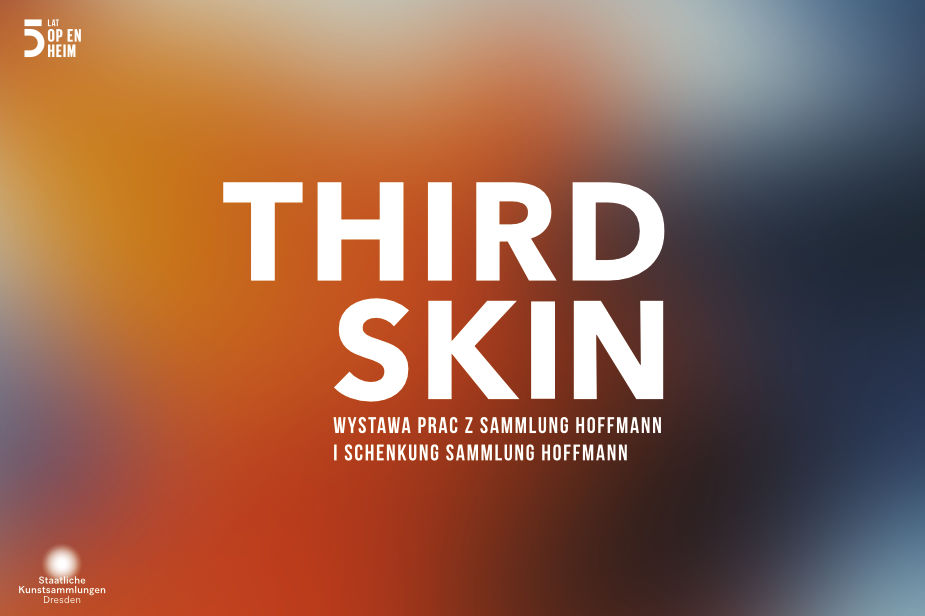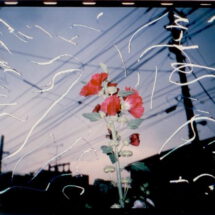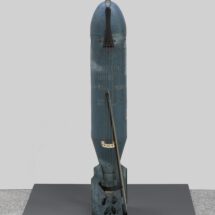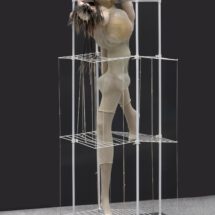𝐓𝐇𝐈𝐑𝐃 𝐒𝐊𝐈𝐍
THIRD SKIN
Works from the Sammlung Hoffmann and Schenkung Sammlung Hoffman
“As soon as I start setting myself rules for the next installation, a leitmotif, a concept, it seems to me as if I were pulling a magnet along under a field of iron filings and everything aligned itself accordingly. Without a concept, everything would be just cabbage and turnips”. This is how Erika Hoffmann described the process of the annual reorganization of her collection, i.e. the yearly new arrangement of artworks in her Berlin living quarters, in a conversation in 2009.
Erika and Rolf Hoffmann have never chosen the word “exhibition” for their presentations; not least, because they do not occupy exhibition spaces but use their living rooms as a place for an intensive and prolonged exchange with artworks. Thus it is primarily about their own exchange with their collection, which Erika Hoffmann once described as being like a third skin, or – as she said on another occasion – like family members.
Since many years now, Erika Hoffmann, who has been acting alone since the death of her husband in 2001, has made this exchange also possible for the public. Her approach differs from the exhibition practice in public institutions, whose mandate always includes the explicit linguistic mediation, promotion and advertising of their exhibition programme. A catchy title, a crisp concept, a gripping advertising campaign and an agile use of social media, everything that museums need in order to fulfil their mission to the public, can be put on the back burner in the private context. Moreover, it has been put on the back burner in order to make room for what was central to the Hoffmanns: the form of expression peculiar to the visual arts; an expression that precisely cannot be translated into words – or only with friction losses.
Accordingly, when visiting the Berlin collection rooms, one is not being greeted by an exhibition title or an introductory text; one even looks in vain for information on the individual works. As a visitor, you only receive such information during one of the guided tours.
Thus, Erika Hoffmann aims not to dominate the encounter with artworks by some concept and to limit them in their complexity and ambiguity. Rather than highlighting an exhibition theme that determines the selection of works – even if such theme has been crucial as a structuring guideline – her focus is on the dialogue between artworks.
It is this very dialogue between works that is the focus of our exhibition at OP ENHEIM. The rooms here are particularly suitable for a presentation of the Sammlung Hoffmann, not least because of their past as living rooms and the privacy that still clings to them. Their intimacy and manageable size inevitably brings the works gathered in the individual rooms into that interesting dialogue with each other that was and is so important to Erika Hoffmann.
The “magnet” used in our selection of works shown at OP ENHEIM is the notion of border. However, the works do not focus on geographical and political borders. Rather, the focus is on interpersonal borders on the one hand, and on artistic borders on the other, on blurring borders, crossing borders, overcoming borders and – perhaps the most striking feature – negotiating borders. The boundaries between painting and sculpture, painting and photography, sculpture and performance, surface and space, the audible and the visible are addressed, they overlap or dissolve in many of the artworks, as is the border between art and what it is surrounded with. This is linked repeatedly – and this is characteristic of the Sammlung Hoffmann – with artistic negotiations about the conditions and limits of the human body, about its social classifications and imprints, the social gender role assignments and loud or quiet, noticed or unnoticed outbursts and transgressions and the border between the private and the public. Last but not least, the skin is a boundary of our body. As is the skin a boundary of our body in itself.
Dorothée Brill, Luise Richter
The exhibition is a cooperation of Fundacja OP ENHEIM and Schenkung Sammlung Hoffmann, Staatliche Kunstsammlungen Dresden.
Production: Łukasz Adamski, Natalia Budzińska
Coordination: Natalia Budzińska
Exhibition design: Daria Pietryka
Visual identification: Grzegorz Kozak
Art conservation: Franziska Klinkmüller (SKD), Urszula Wencka
Promotion: Dorota Oczak–Stach, Hania Mokijewska
Realisation: Michał Michałczak – Keep Away From Fire
Translation: Karol Waniek, Małgorzata Słabicka-Turpeinen
Cooperation: Katrin Bäsig (SKD), Wojciech Gandecki, Maria Głubisz, Mateusz Kilanowski, Weronika Kałuża, Walentyna Schaiko, Dominika Specht, Ivan Shpak, Agnieszka Wróblewska







